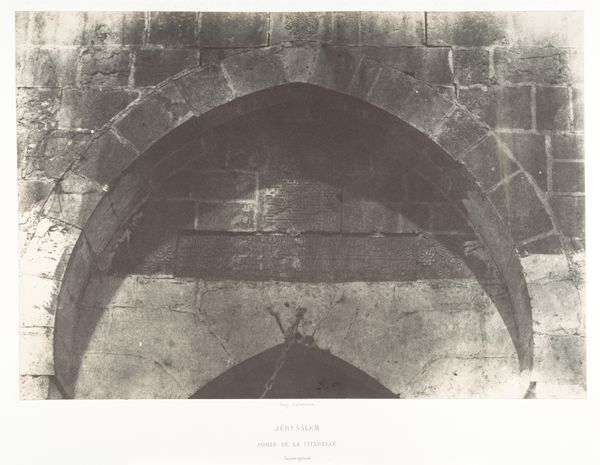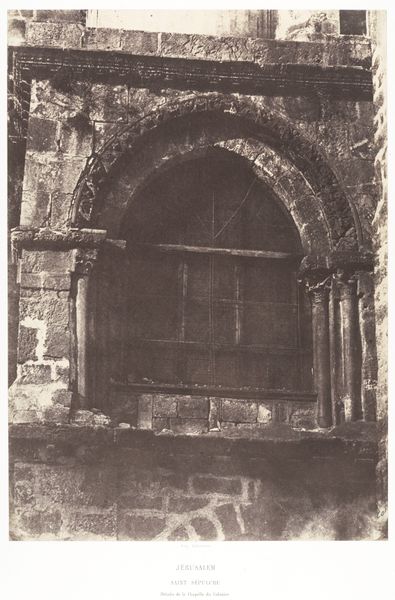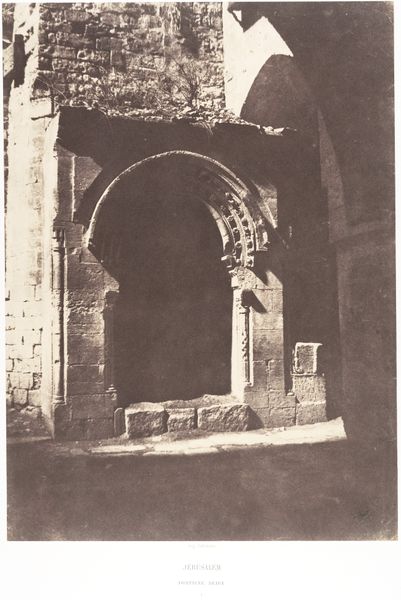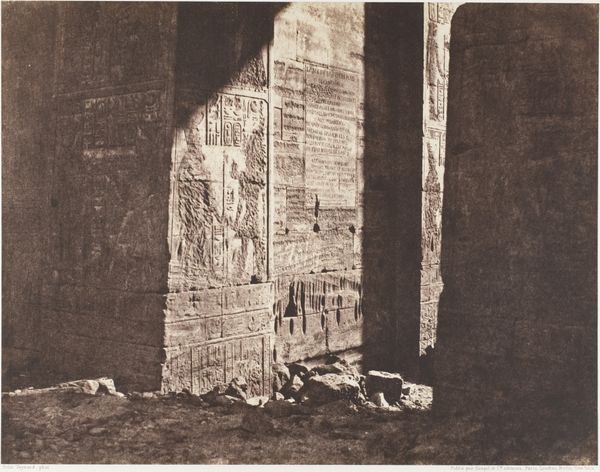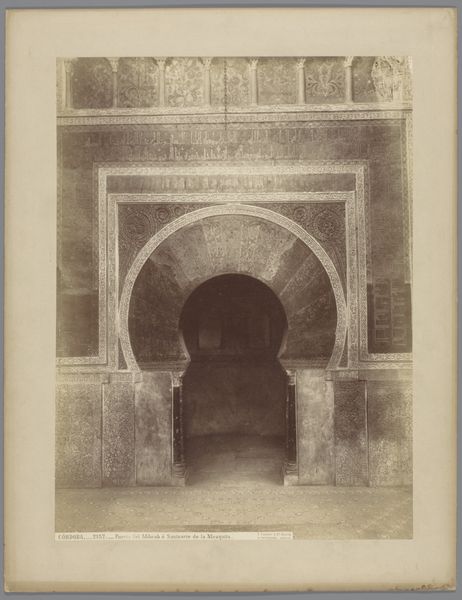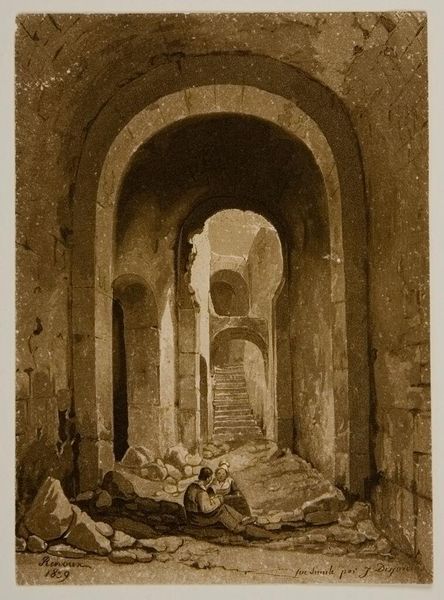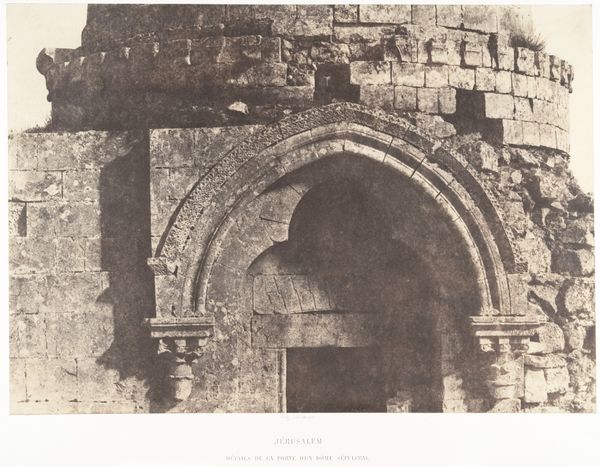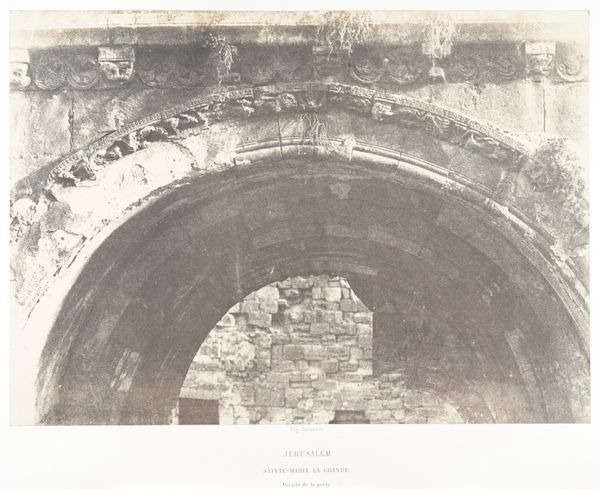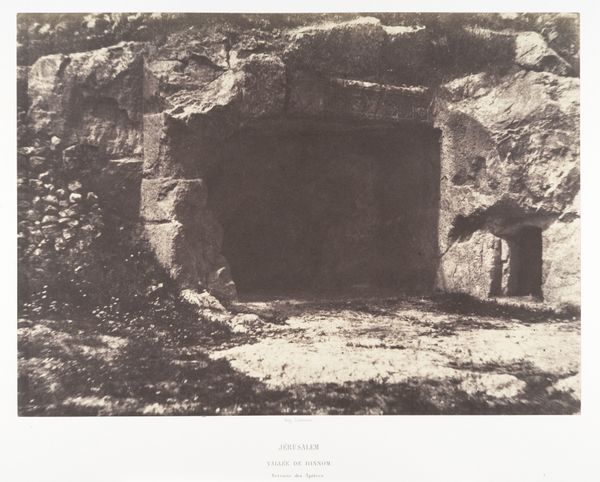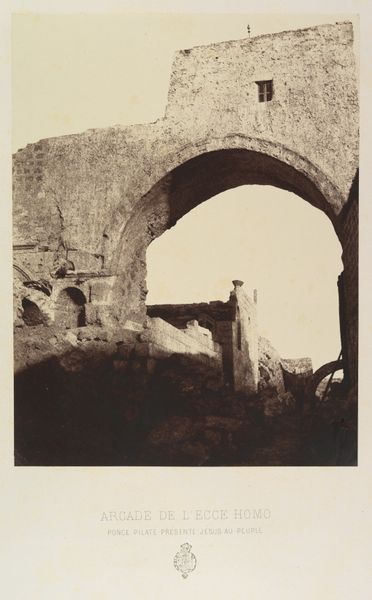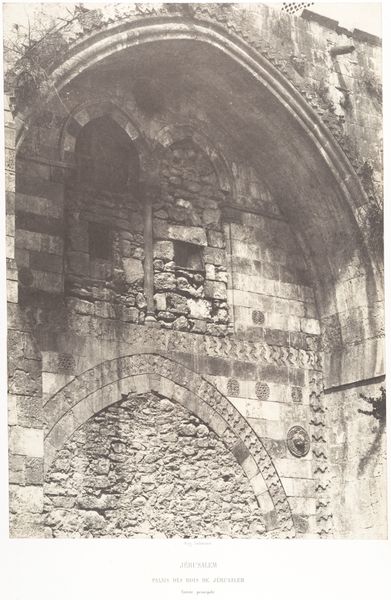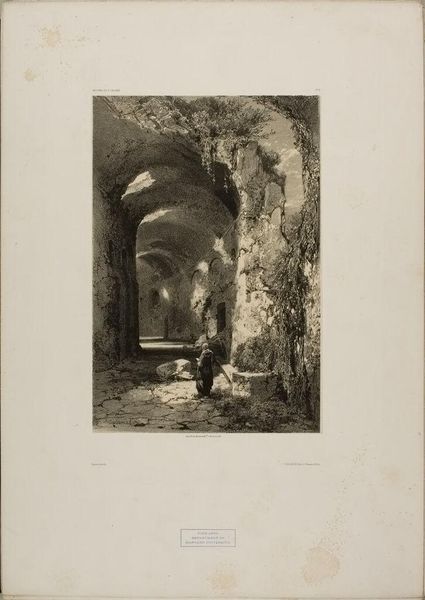![[Tag-e bustan, Kermanshah, Kurdestan] by Luigi Pesce](/_next/image?url=https%3A%2F%2Fd2w8kbdekdi1gv.cloudfront.net%2FeyJidWNrZXQiOiAiYXJ0ZXJhLWltYWdlcy1idWNrZXQiLCAia2V5IjogImFydHdvcmtzLzZlZDg1OTcxLTk0YWMtNGM3ZS04ZWJhLWJlNTA3Y2VkNThlNS82ZWQ4NTk3MS05NGFjLTRjN2UtOGViYS1iZTUwN2NlZDU4ZTVfZnVsbC5qcGciLCAiZWRpdHMiOiB7InJlc2l6ZSI6IHsid2lkdGgiOiAxOTIwLCAiaGVpZ2h0IjogMTkyMCwgImZpdCI6ICJpbnNpZGUifX19&w=3840&q=75)
carving, relief, photography
#
carving
#
relief
#
landscape
#
photography
#
carved into stone
#
arch
#
islamic-art
#
history-painting
#
natural palette
#
limited palette
Copyright: Public Domain
Editor: So, we're looking at a photograph titled "[Tag-e bustan, Kermanshah, Kurdestan]" by Luigi Pesce, dating from around 1840 to 1869. It seems to depict an ancient stone carving. The limited palette really makes the texture stand out. What jumps out at you when you look at this? Curator: This photograph offers us a glimpse into the European fascination with ancient Persian history during the 19th century. Notice how Pesce frames the Sasanian rock reliefs at Tag-e Bostan. It isn't just about documentation; it's about capturing a specific vision of the "Orient" for a Western audience. Do you see how the play of light and shadow emphasizes the 'mystery' and age of the carving? Editor: Yes, definitely. It's almost romanticized, like an exotic relic. How much of that perception do you think was influenced by the political relationship between Europe and Persia at the time? Curator: Hugely. Photography, then a relatively new technology, became a tool for constructing and disseminating narratives. Images like these shaped European perceptions of Persian identity and power. It's also interesting to consider who was commissioning and consuming these images. What purpose did they serve within the context of imperial power and artistic movements like Orientalism? Editor: So, it's less about objective record-keeping and more about shaping a particular narrative for a specific audience back home. I hadn't really considered that. Curator: Exactly. Think about how the very act of photographing this site, selecting a viewpoint, and choosing the lighting, reinforces a specific reading of history, power, and cultural significance. And how museums play a role in further shaping how these images are viewed today. Editor: That gives me a lot to think about. It’s made me reconsider how much influence context has on not only the creation, but the reception of artwork as well. Curator: Precisely! Understanding art means understanding the historical forces that shaped its creation and interpretation.
Comments
No comments
Be the first to comment and join the conversation on the ultimate creative platform.
